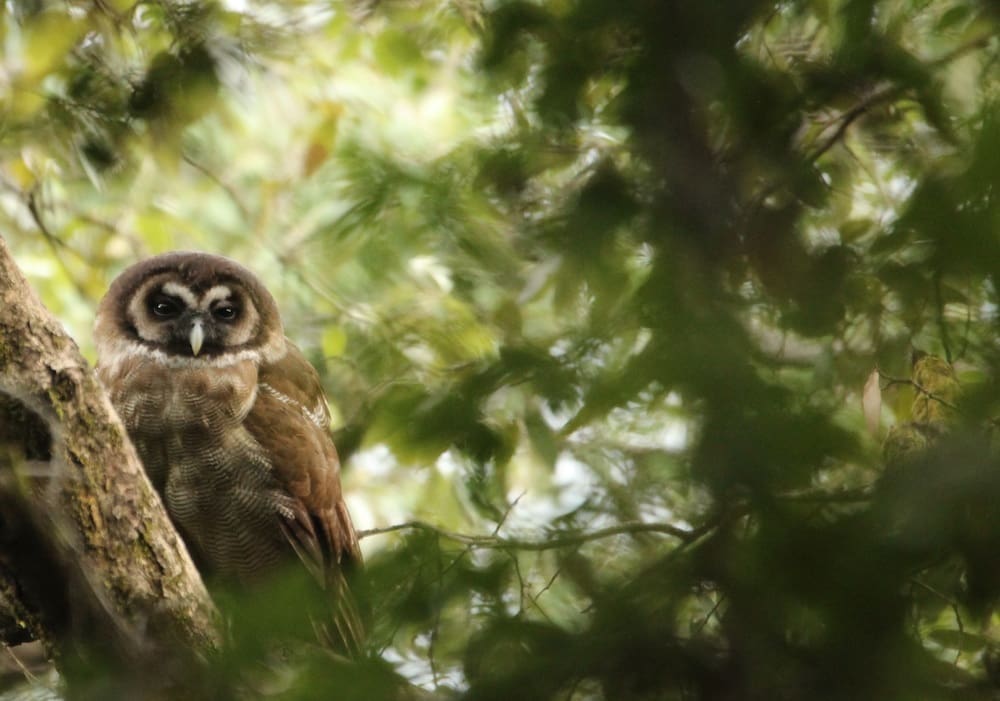At Cheer Point, beyond Vinayak, we waited for Cheer Pheasants to show up. I saw physics in motion as the clouds pushed against the jagged rock faces and then rose up in a rush. Neither seemed willing to relent its stance. And the result? Curtains drawn over a magnificent performance that played out at the same stage earlier in Pangot.
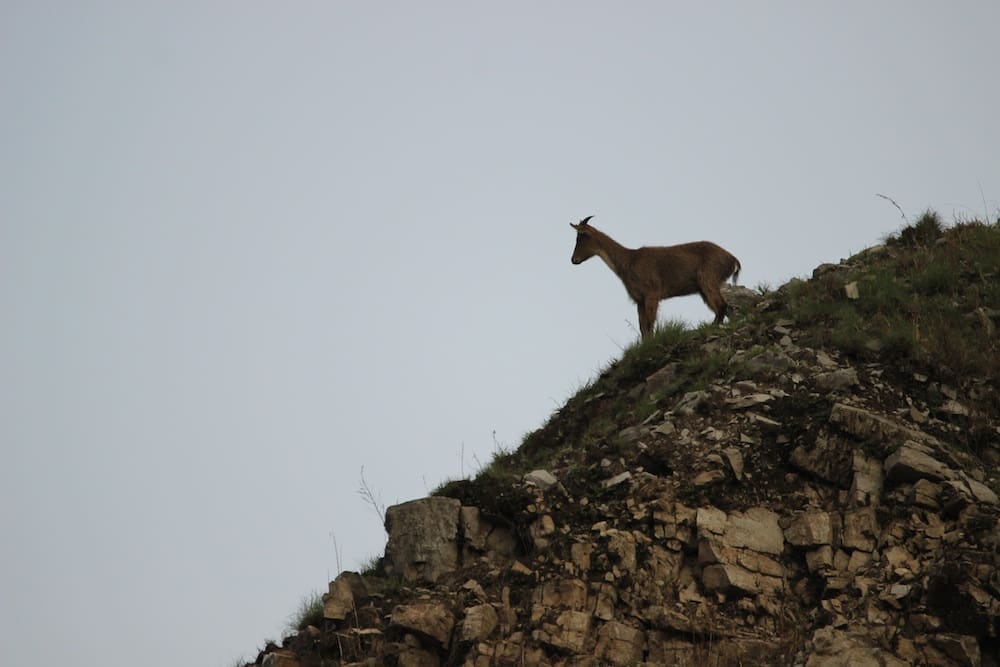
Visibility had reduced to around 25 meters and the calls of the Upland Pipit and Rufous Sibia were now muted. Rhesus Macaques and Gorals were certainly around but my primary sense organ was of limited use under this cloak of grey that transported us, mentally, to the Scottish highlands. Oak and rhododendron decked the grassy rock-face. What had initially appeared like raisins and almond shavings on some Indian dessert had now transformed into eerie silhouettes from the sets of Sleepy Hollow. The bushes that hosted the Ultramarine Flycatcher, White-tailed Nuthatch and Whiskered Yuhina were now invisible. In the sea of grey I put my camera down and pulled out a sandwich from my lunch box. I ruminated. And it dawned on me that this is how Pangot retains its secret as a hidden jewel of the Kumaon.
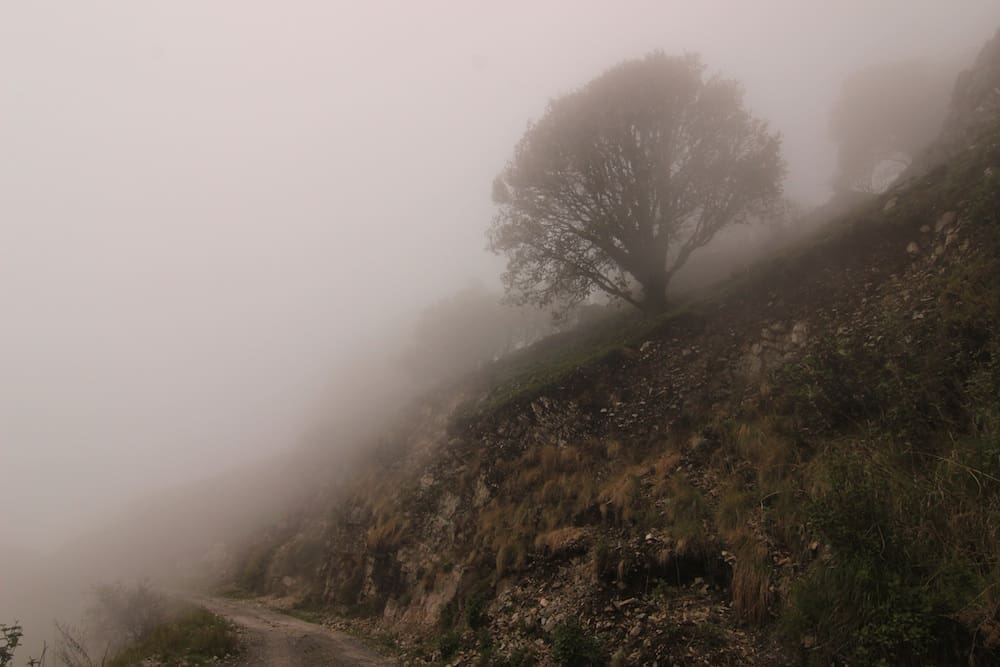
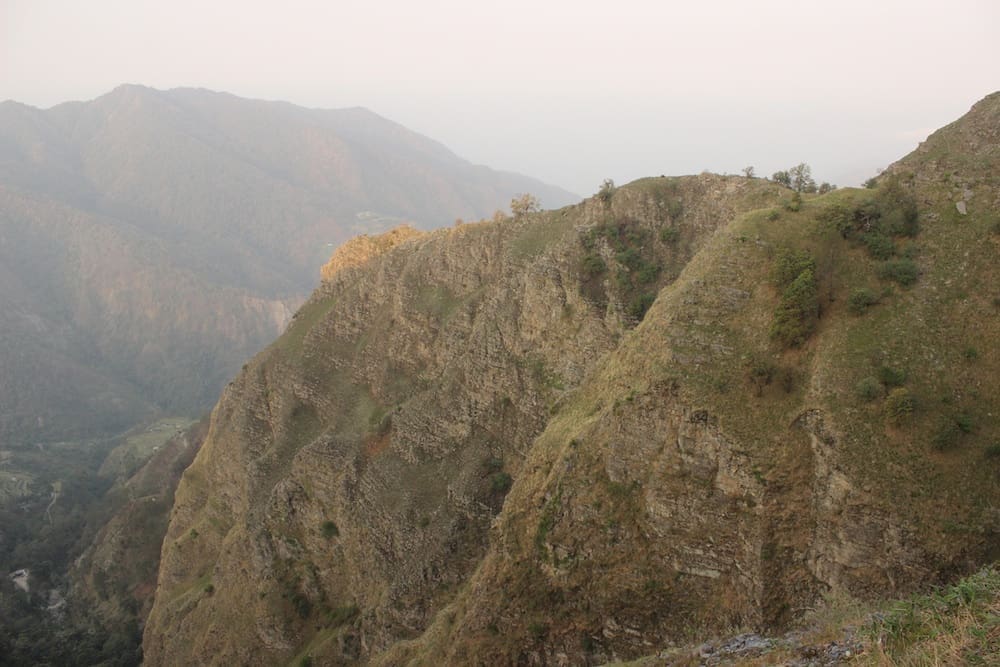
Pangot was never our first choice for this vacation. It was Corbett National Park. It was due to a logistical advantage that Pangot pulled off a coup and landed us up in the mountains while we should have been in the plains. We traded sal and bamboo for oaks, rhododendron, deodar and ringal (dwarf bamboo). We traded the hot weather of the plains for the cantankerous mountain chill and reached Pangot in the midst of a hailstorm.
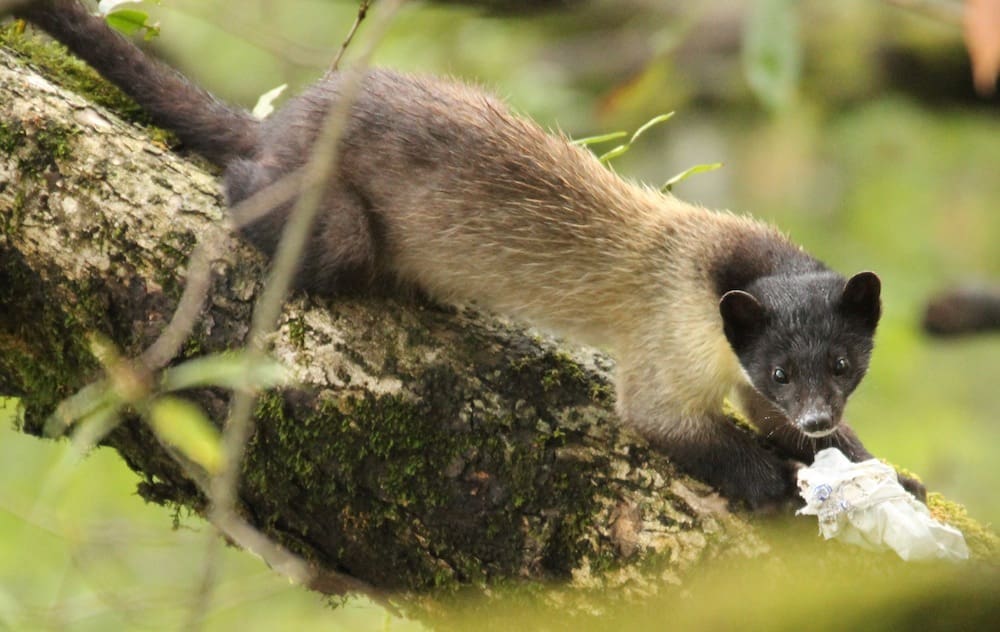
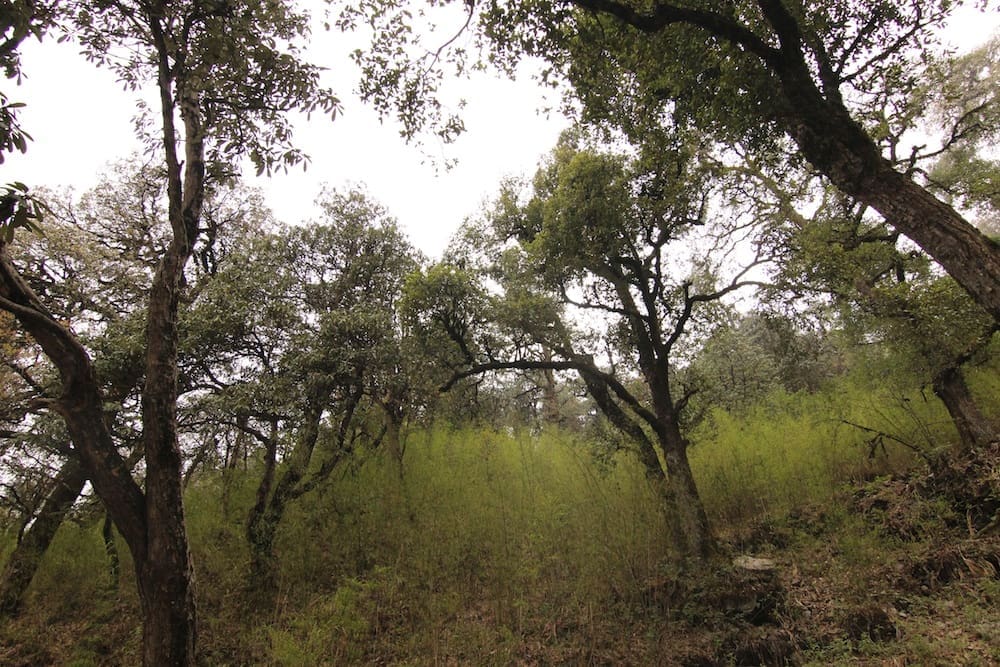
It rained heavily for more than half an hour before letting up. The drumming of raindrops on the roof now made way for the calls of the Red-billed Blue Magpie, Great Barbet, Rufous Sibia, Black Headed Jays and the chattering of the Rhesus Macaque. A Long-tailed Broadbill played a cameo outside our accommodation and an anxious solitary Yellow-throated Marten melted away into the shrubbery sensing my approach. Streaked Laughingthrushes were omnipresent. The evening sun shone bright and traces of sunlight remained well past 8 pm.
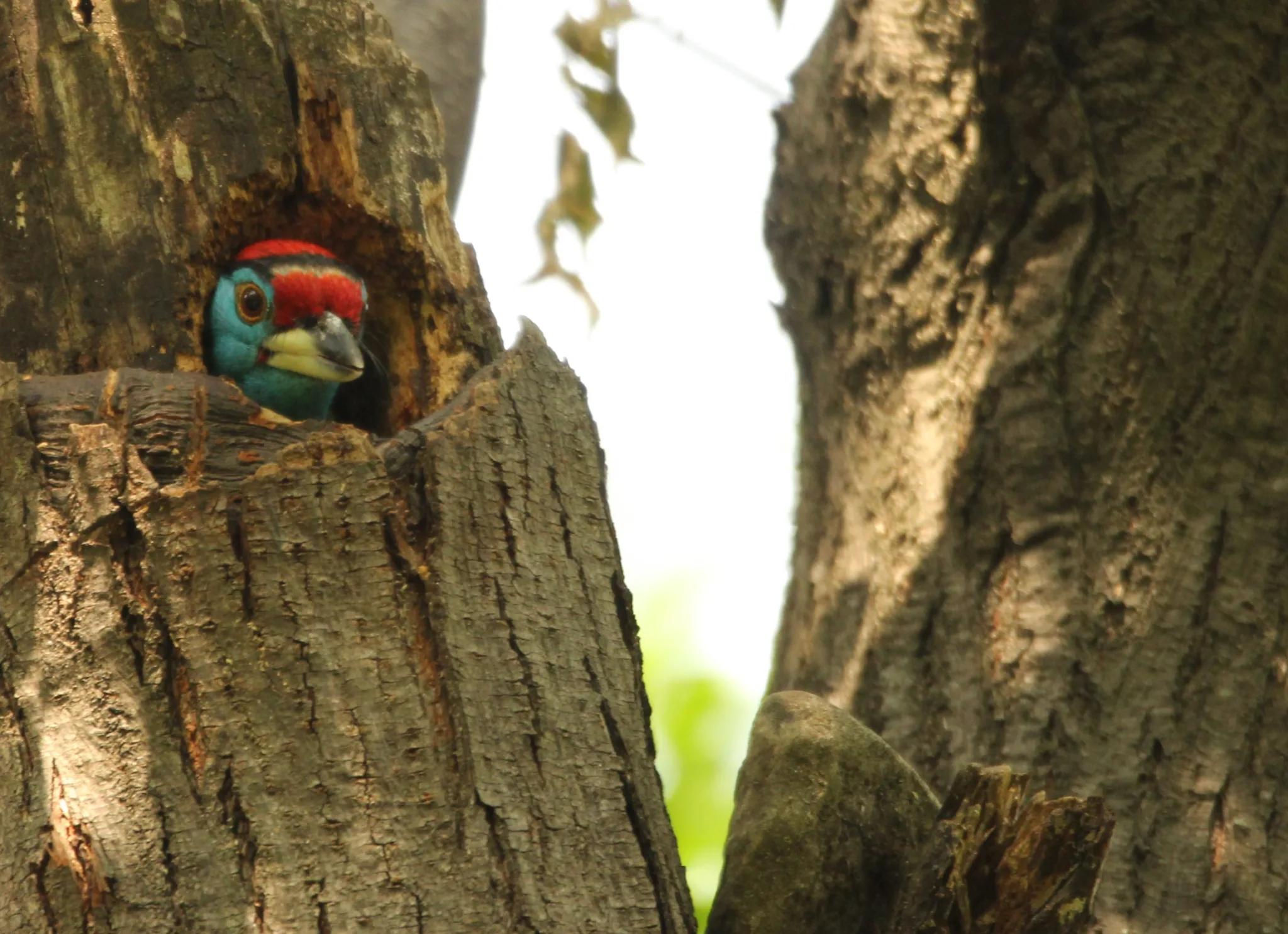
The next day dawned and on the itinerary was a long day of birding. A Great Barbet showed up early for a ficus feast and as we drove towards Vinayak a Kaleej Pheasant hen darted across the macadam. A foreboding, perhaps, of pleasant pheasant sightings. The flowering Rhododendrons attracted Eurasian Jays and Grey Winged Blackbirds. We saw two varieties of rhododendron in this part of Uttarakhand — with red and pink flowers respectively. Locally, it is known as Buransh. The Rhododendron is the state flower of Uttarakhand.
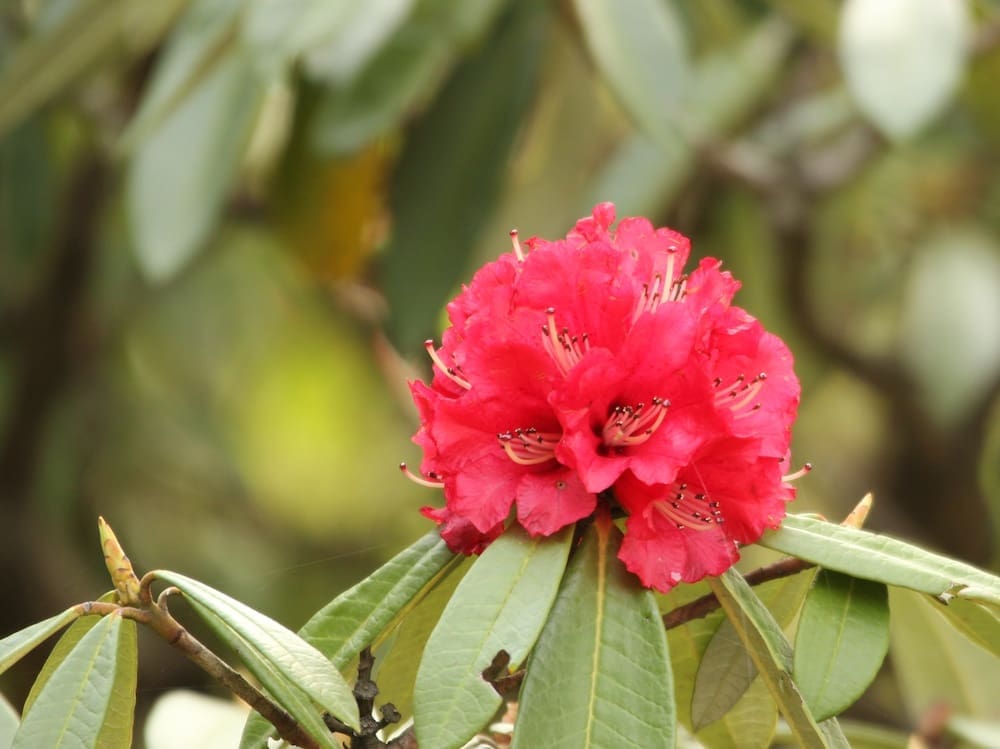
On the way we chanced upon a Himalayan Grey Langur perched upon a small temple spire crowned with a trident. They were shier than the Tufted Grey Langurs of the south and were sensitive to human presence. Never during the sojourn did a Grey Langur sighting last longer than a minute.
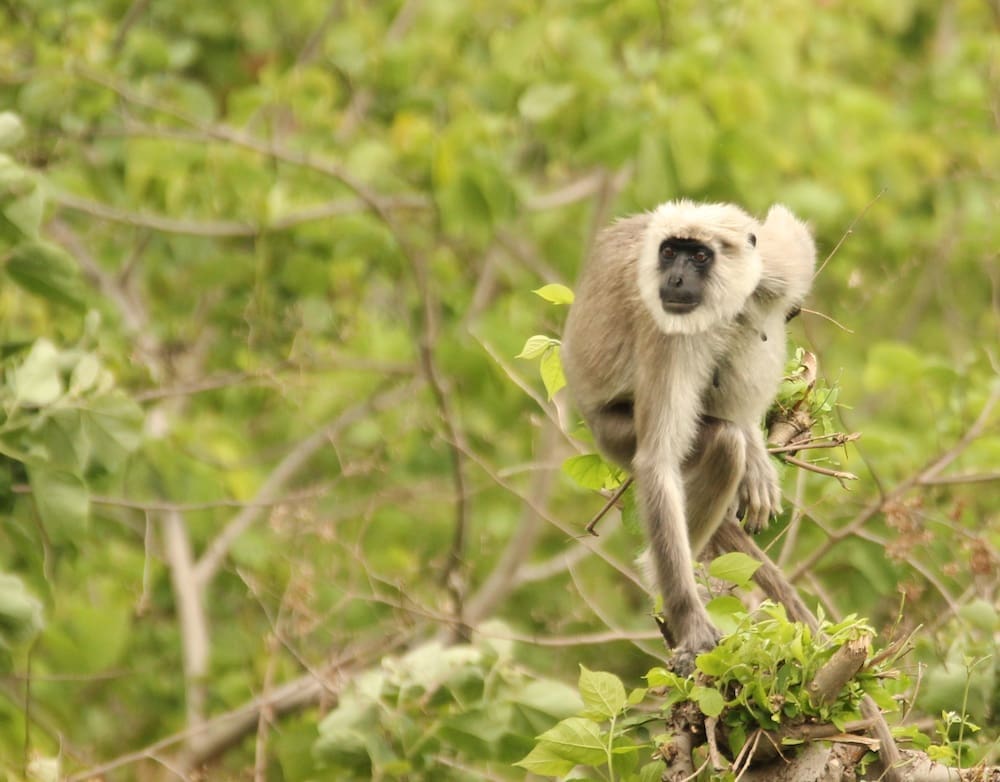
We crossed the subalpine forests and reached a rocky face of hills predominated by grasslands — this was our best chance at sighting Cheer and Koklass pheasants, I was told. A goral welcomed us from atop the hills and, to our horror, we saw a troop of Rhesus Macaques spread across the grassland on the rocky incline, diminishing any chances of pheasant sightings. We learned that Rhesus Macaques caught by animal control agents in the plains are released in the mountains. As a result they wreak havoc on birdlife and the limited agriculture that exists in these mountains in the form of potato and peas farms. While we were out of luck with the pheasants, we got to feast on a White-tailed Nuthatch, Whiskered Yuhina, Ultramarine Flycatcher, Himalayan Woodpecker, Rufous-bellied Woodpecker, Hill Partridge and Chestnut-headed Laughingthrush as we moved forward.
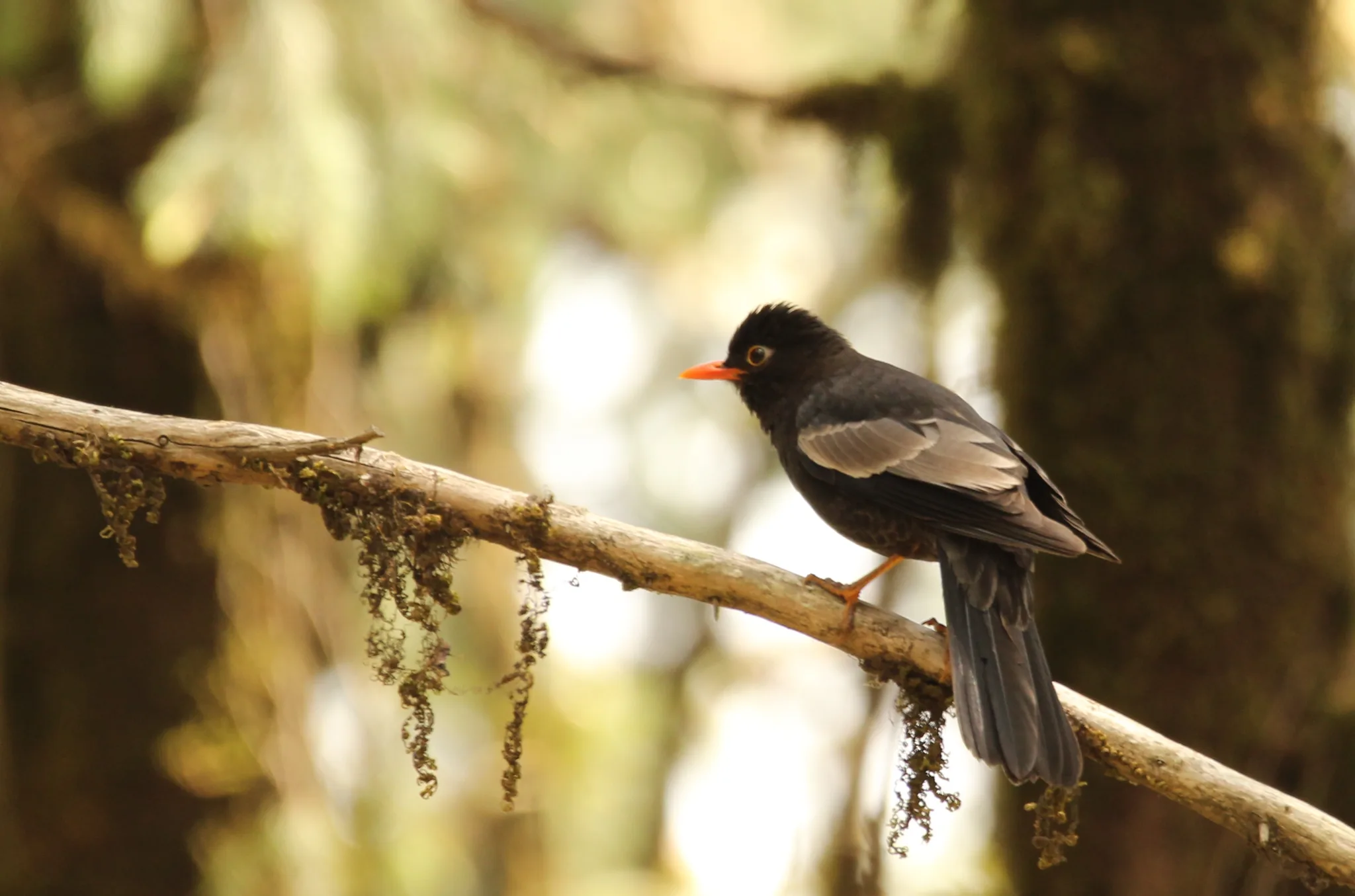
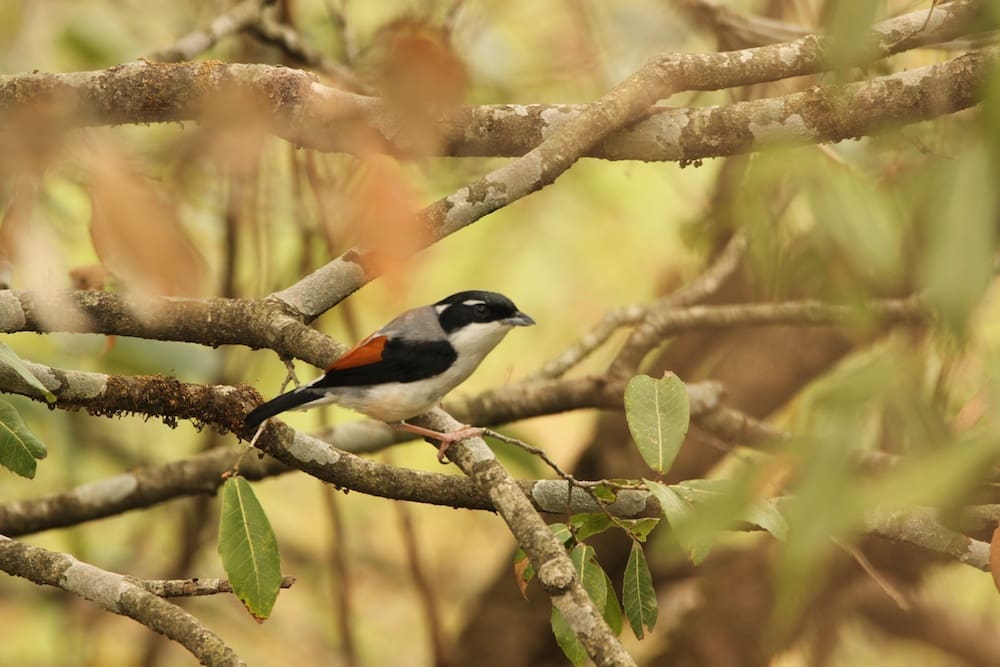
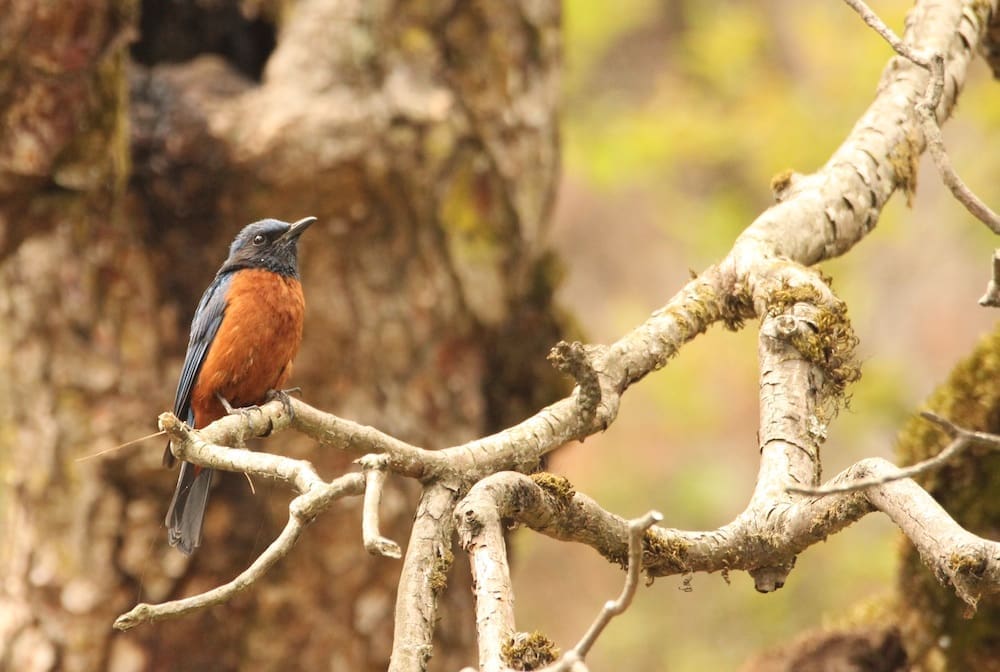
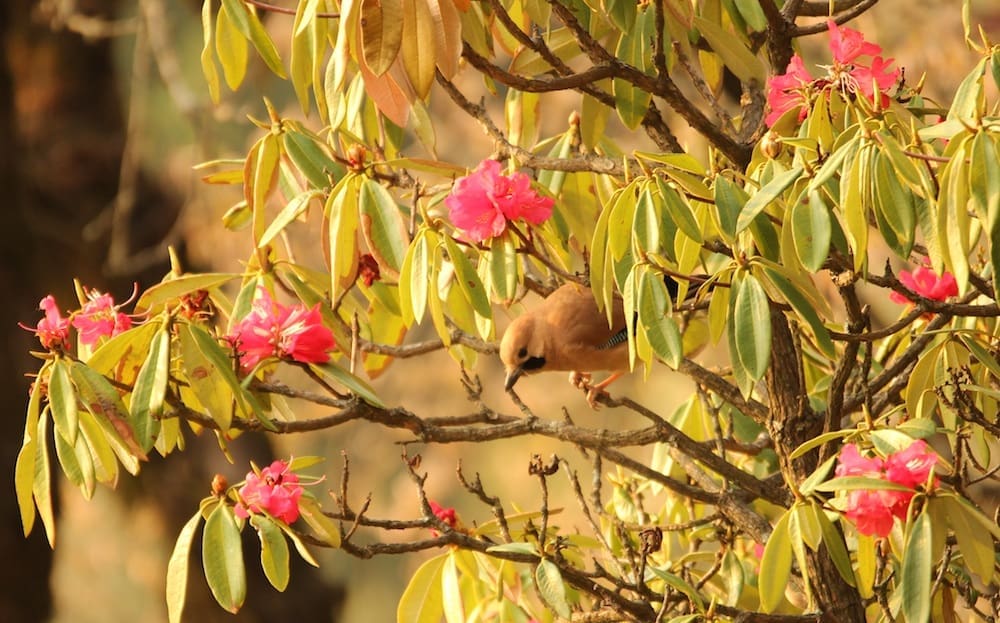
We were back among the oak forests and moved into deodar forests where we spotted Maroon Orioles, White-browed Shrike Babblers, Ashy Drongo, Verditer Flycatchers, Grey-hooded Warblers. The pheasants were not on the list and one of the theories I heard was that the forest fires in Uttarakhand in April and May may have played a role in this, since pheasants were predominantly ground dwellers. Not that it mattered, since a southerner like me had already had a sumptuous sighting of unfamiliar species. Another interesting conversation during the trip was around rhododendrons. I learnt that rhododendrons are usually done blooming by April-May; however this year due to the weather pattern they were blooming as late as June in this region.
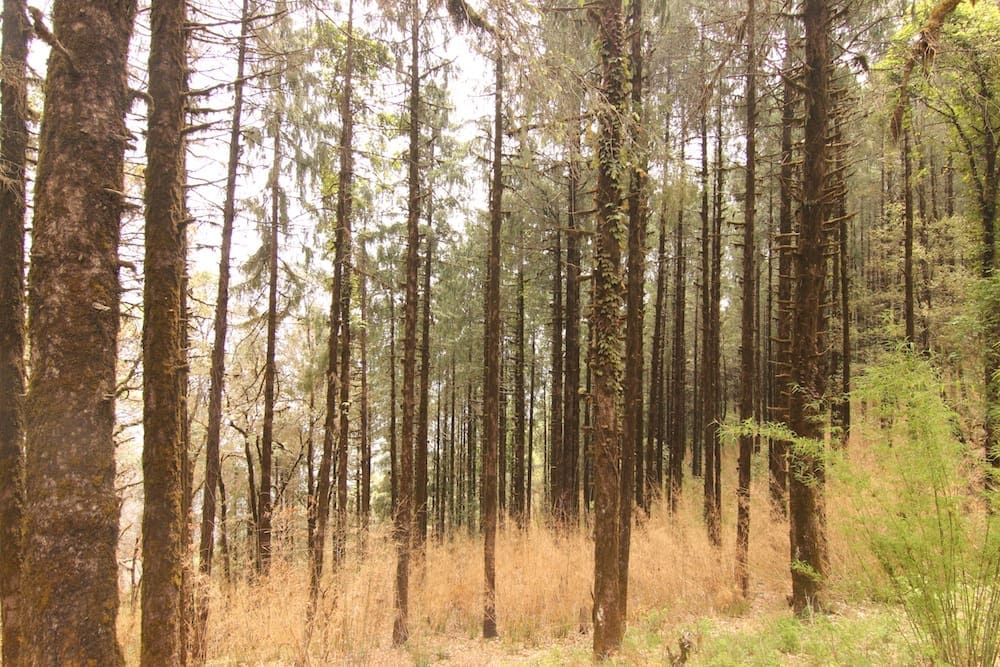
After nearly six hours of birding we wrapped up the morning session. After lunch the clouds gathered and the hailstorm returned with a sequel. We were advised to try a different landscape as a result of the rain and we trained our bearings towards secondary growth. We drove downhill from Pangot to villages with cultivation.
Cultivation brought us in the company of the Striated Prinia and Grey-breasted Prinia. A Speckled Piculet piqued our attention. However, the piculet remained elusive, giving us less than 30 seconds of a clear sighting. Verditer Flycatchers were more than eager to announce themselves. The meeting with them took me back four years ago to an evening in Neuli when the Ogres spent some time at a gazebo while trying to get a shot of the Verditer Flycatcher.
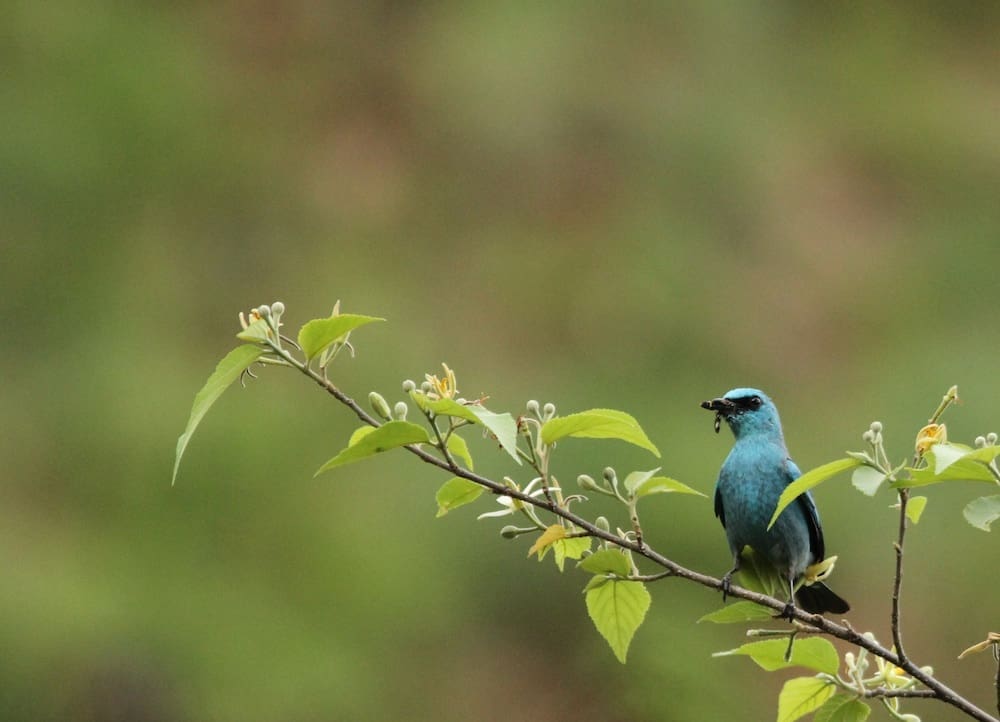
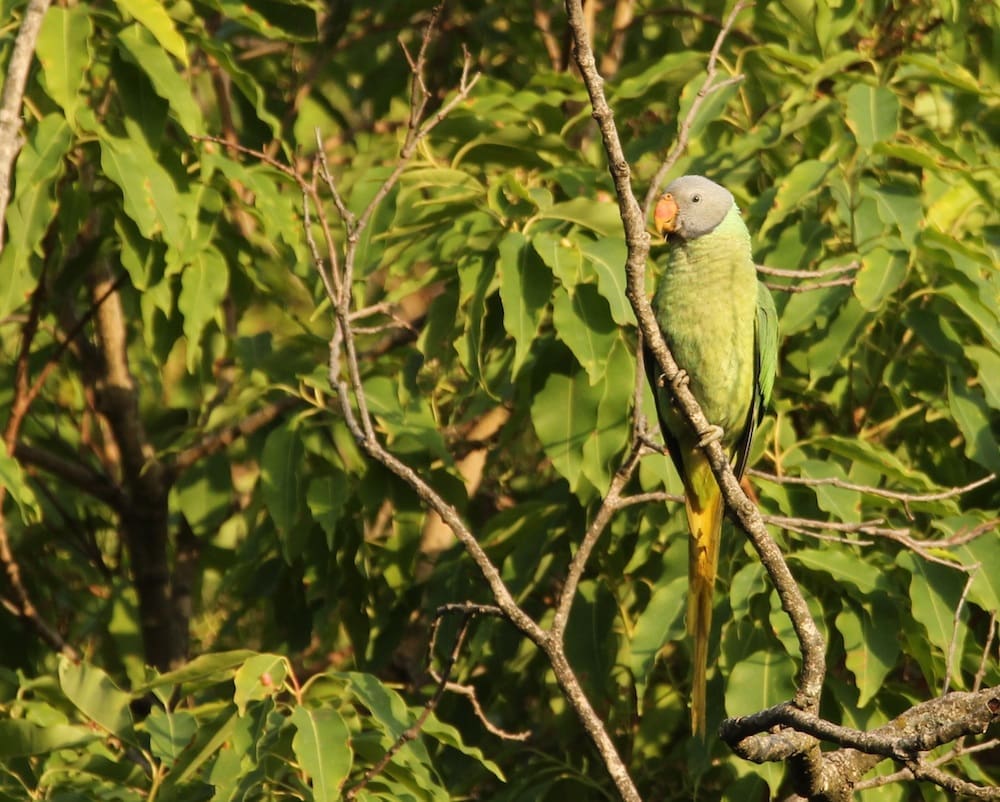
Among the notables that made it to my life list that day were Black-cheeked Babbler, Blue-fronted Barbet and Black-throated Tit. A silhouette of a Black Bulbul appeared atop a dry branch and quickly melted away against the backlit sky.
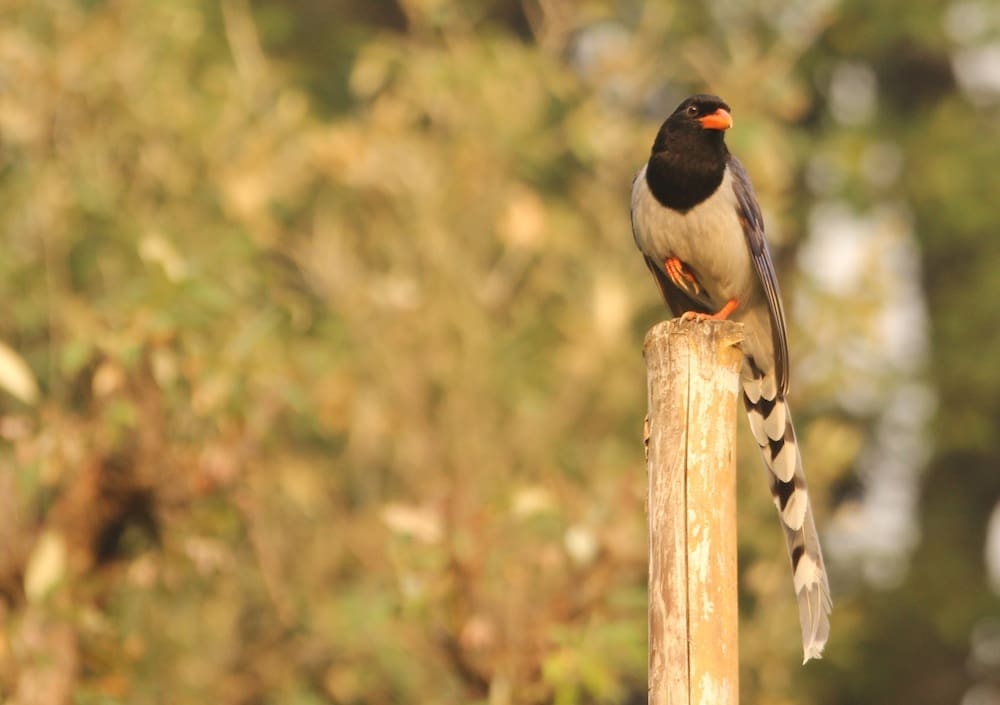
The next day started with bird calls soon to be drowned in the loud voices of weekend tourists streaming in. It felt this heaven was now not so difficult to transcend, given the rows of “hotels” that have opened up at Pangot. It got me thinking: Does transcending heaven necessarily mean that you feel in heaven? Playing loud music that runs on artificial power can in no way replace the undulating notes of the serenades from avian vocal chords.
The calls of the Maroon Oriole, Great Barbet and Red-billed Blue Magpie brought me back to the experience of heaven, albeit with occasional high decibel human voices reminding me that heaven falls on the tourist circuit.
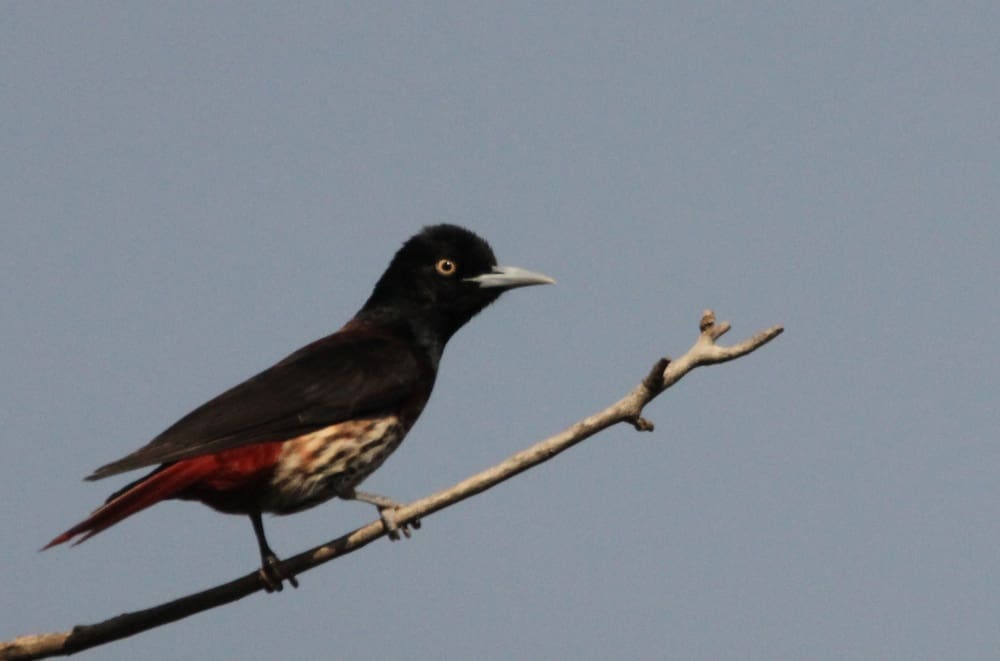
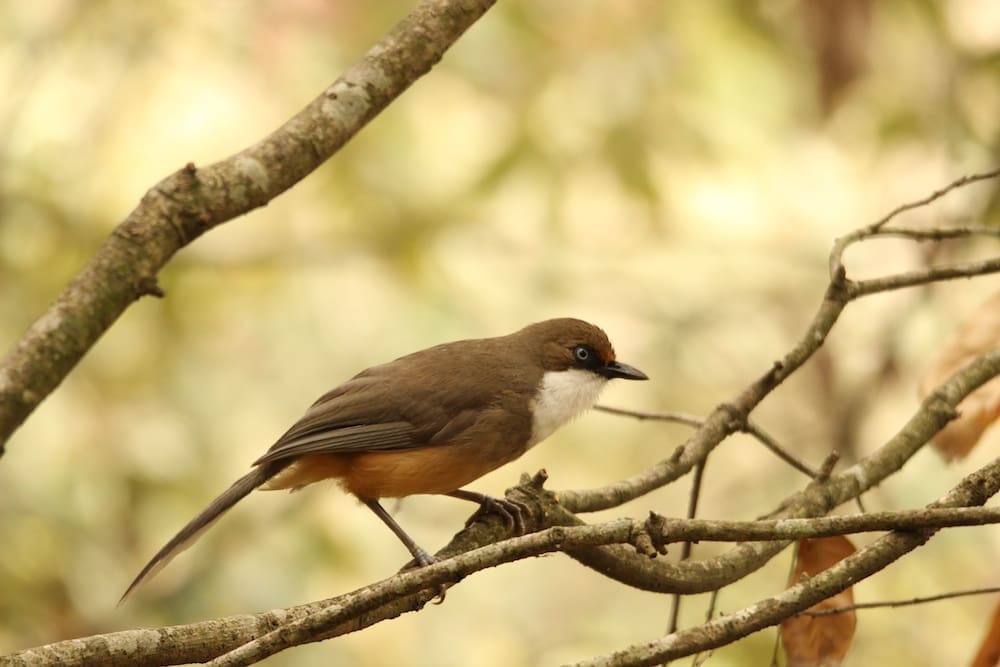
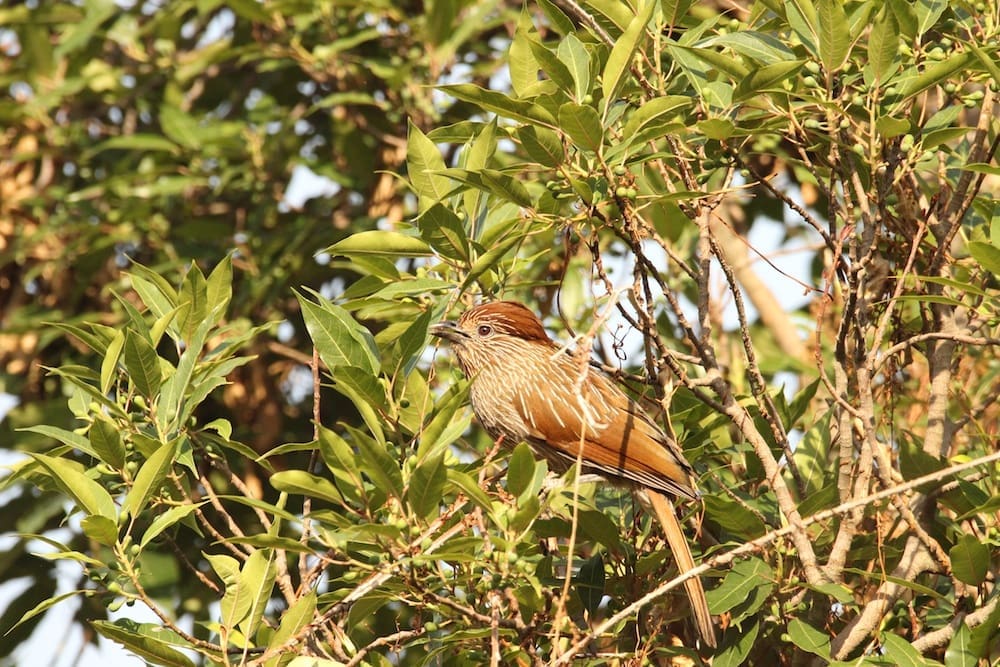
Afternoon brought an interesting sight — a Red-billed Blue Magpie had caught a large moth in its beak. Since the wings of the moth were large and the moth was trying to break free the magpie, perched on a branch, pulled out the wings one by one, until only the abdomen moth remained, which the magpie consumed. Had the moth’s wings remained intact for a few seconds longer, it might have broken free; however, the magpie displayed intelligence in disarming and disabling its quarry.
The quest for the Spotted Forktail took us on a six-kilometer walk in the evening. The canopy of tall trees in the valley appeared dwarfish, while diminutive leeches presented a gargantuan problem. Clouds started to roll in and we rushed back in the drizzle that was picking up. It rained heavily in the night.
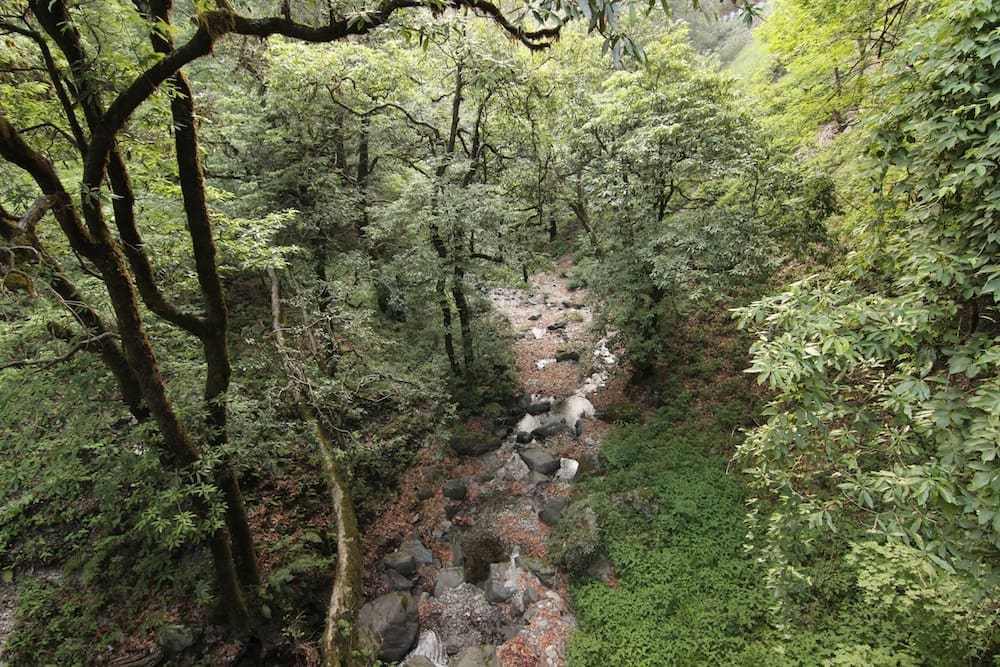
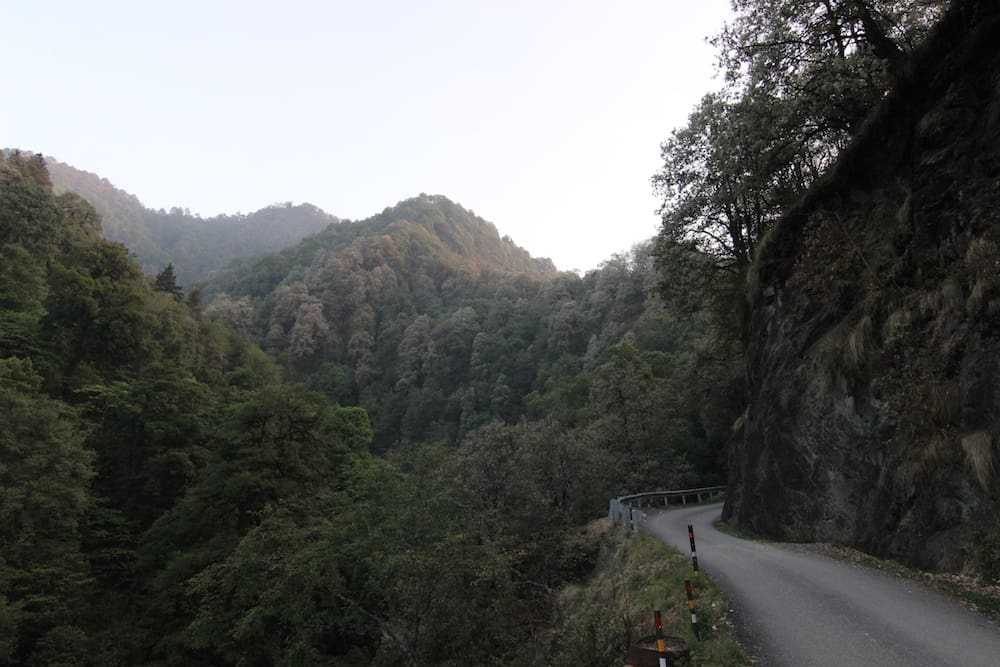
The next morning towing behind the guide I headed back towards Kilbury for one more shot at the forktail. A Yellow Throated Marten couple made provided several minutes of sighting. Though it was a pitiful sight to see them biting into a plastic cover they had picked up from a nearby garbage dump.
The previous night’s rain had drenched a Black Eagle’s coat, which brought the eagle out on an open perch, drying it plumes. The stream of the previous evening had swollen and the trickle of the previous evening had turned into a waterfall. An adult Brown Wood Owl and a juvenile made it as last minute entrants into the checklist of denizens of heaven.
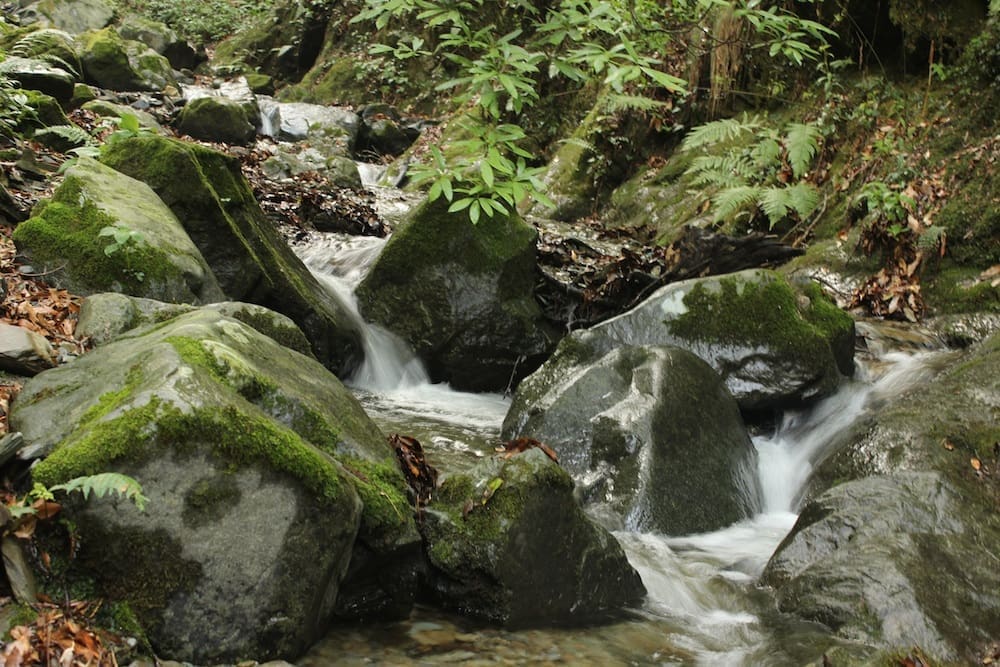
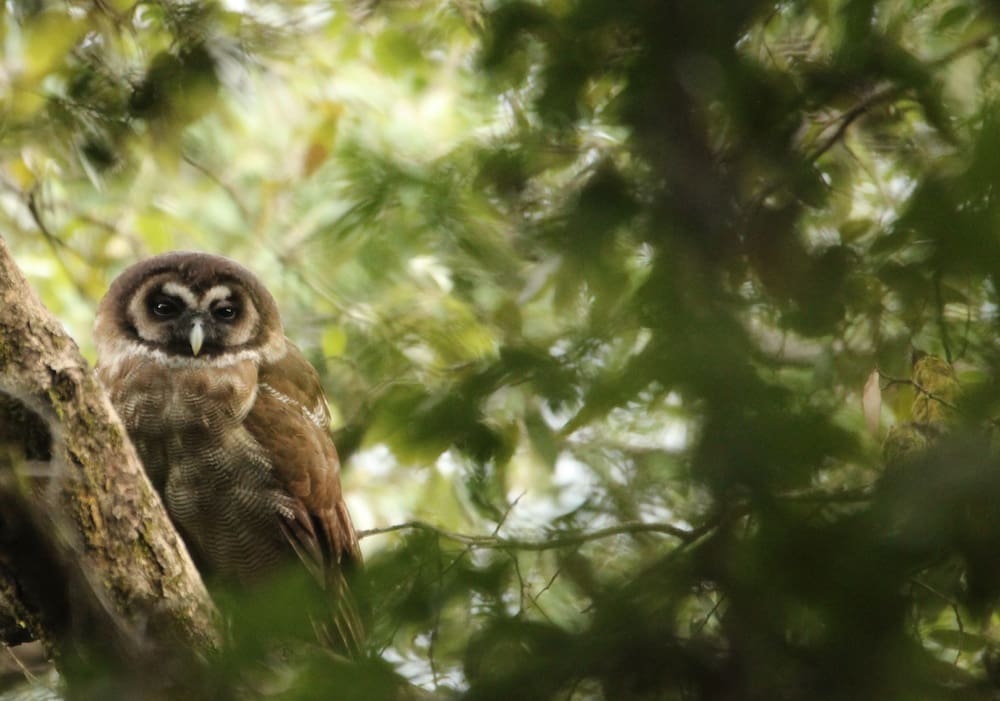
Pangot had cut us off from the world. Pockets of network connectivity and no television or newspapers made this trip a detox regale. It was in a way meditation. A sattvic visual diet. A cleansing of mind with cool water. It unwound knots of stress in the body. It was living in the present. It was mindfulness. It was (hiatus, deep breath) heaven!
A checklist of birds observed at Pangot (in no specific order)
- Blue Throated Barbet (Megalaima asiaticus)
- Brown Fronted Woodpecker (Dendrocoptes auriceps)
- Black Bulbul (Hypsipetes leucocephalus)
- Kalij Pheasant (Lophura leucomelanos)
- Black Chinned Babbler (Stachyridopsis pyrrhops)
- Greater Yellownape (Chrysophlegma flavinucha)
- Grey Breasted Prinia (Prinia hodgsonii)
- Striated Prinia (Prinia crinigera)
- Blue Capped Rock Thrush (Monticola cinclorhynchus)
- Chestnut Headed Bee Eater (Merops leschenaulti)
- Black Throated Tit (Aegithalos concinnus)
- Oriental White Eye (Zosterops palpebrosus)
- Jungle Myna (Acridotheres fuscus)
- Red Vented Bulbul (Pycnonotus cafer)
- Himalayan Bulbul (Pycnonotus leucogenys)
- Speckled Piculet (Picumnus innominatus)
- Purple Sunbird (Cinnyris asiaticus)
- Veriditer Flycatcher (Eumyias thalassinus)
- Grey Bushchat (Saxicola ferreus)
- Red Rumped Swallow (Cecropis daurica)
- Grey Treepie (Dendrocitta formosae)
- Red Billed Blue Magpie (Urocissa erythroryncha)
- Russet Sparrow (Passer rutilans)
- Slaty Headed Parakeet (Psittacula himalayana)
- Plum Headed Parakeet (Psittacula cyanocephala)
- Blue Whistling Thrush (Myophonus caeruleus)
- Eurasian Blackbird (Turdus merula)
- Streaked Laughingthrush (Garrulax lineatus)
- Striated Laughingthrush (Garrulax striatus)
- White Throated Laughingthrush (Garrulax alboguralis)
- Rufous Sibia (Heterophasia capistrata)
- Black Headed Jay (Garrulus lanceolatus)
- Oriental Magpie Robin (Copsychus saularis)
- Spotted Dove (Streptopelia chinensis)
- Large Billed Crow (Corvus macrorhynchos)
- Eurasian Jay (Garrulus glandarius)
- Rufous Woodpecker (Micropternus brachyurus)
- Oriental Turtle Dove (Streptopelia orientalis)
- Wedge-Tailed Green Pigeon (Treron sphenura)
- Grey Winged Blackbird (Turdus boulboul)
- Himalayan Woodpecker (Dendrocopos himalayensis)
- Ultramarine Flycatcher (Ficedula superciliaris)
- Ashy Drongo (Dicrurus leucophaeus)
- White Tailed Nuthatch (Sitta himalayensis)
- Whiskered Youhina (Yuhina flavicollis)
- Hill Partridge (Arborophila torqueola)
- Chestnut Bellied Rock Thrush (Monticola rufiventris)
- White Browed Shrike Babbler (Pteruthis flaviscapis)
- Black Winged Cuckooshrike (Coracina melaschistos)
- Dark Sided Flycatcher (Muscicapa sibirica)
- Maroon Oriole (Oriolis trailii)
- Chestnut Headed Laughing Thrush (Trochalopteron erythrocephalum)
- Grey Hooded Warbler (Phylloscopus xanthoschistos)
- Rusty Cheeked Scimitar Babbler (Pomatorhinus erythrogenys)
- Black Eagle (Ictinaetus malaiensis)
- Brown Wood Owl (Strix leptogrammica)
Text and Photographs:Anand Yegnaswami
- Kutch Diaries – Spying on the elusive Desert Cat - June 10, 2020
- Kutch Diaries: Up close with the raptors of Banni - May 24, 2020
- Kutch Diaries – Going Waku Waku with Sandgrouse in Banni - April 29, 2020

